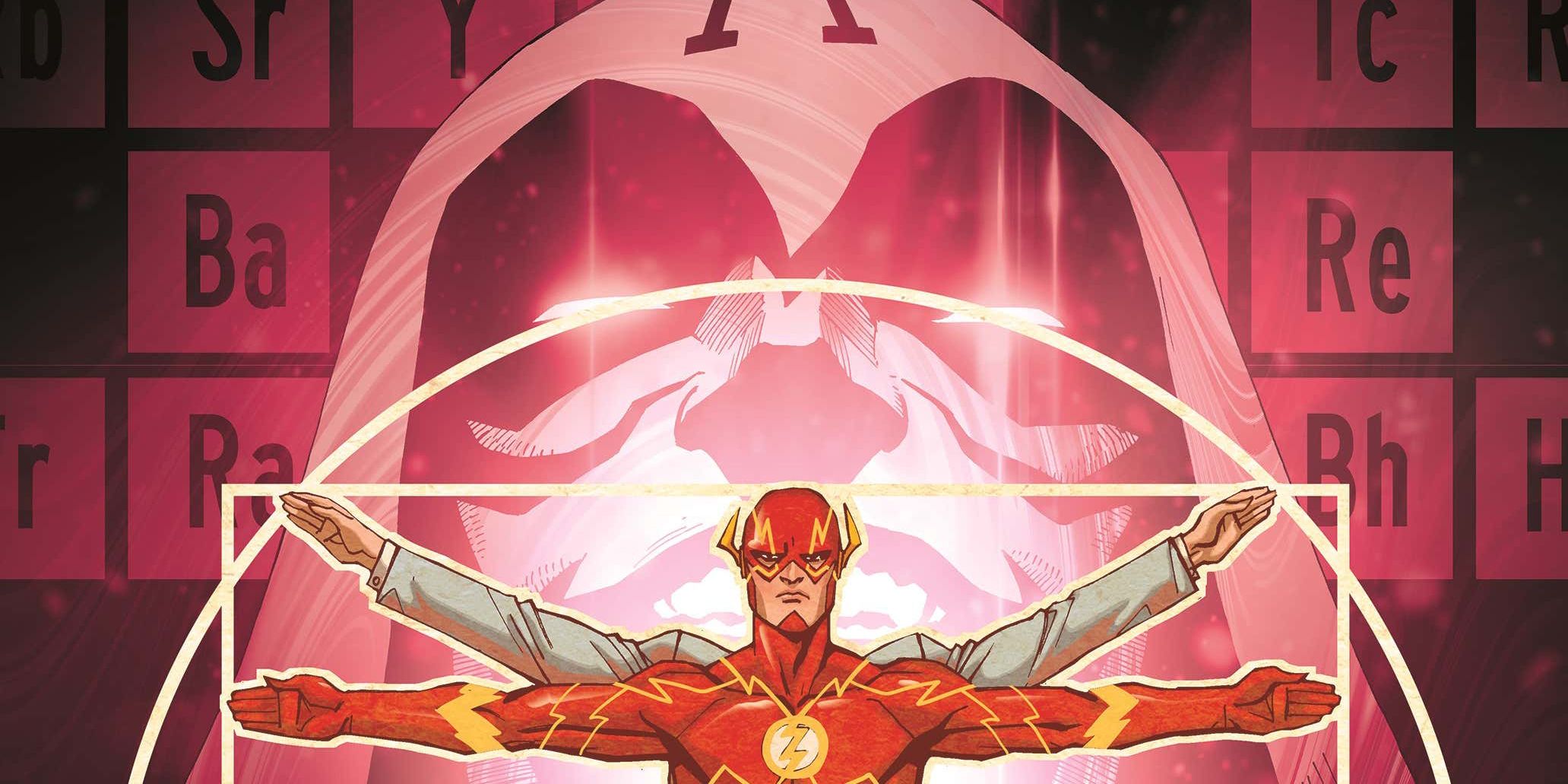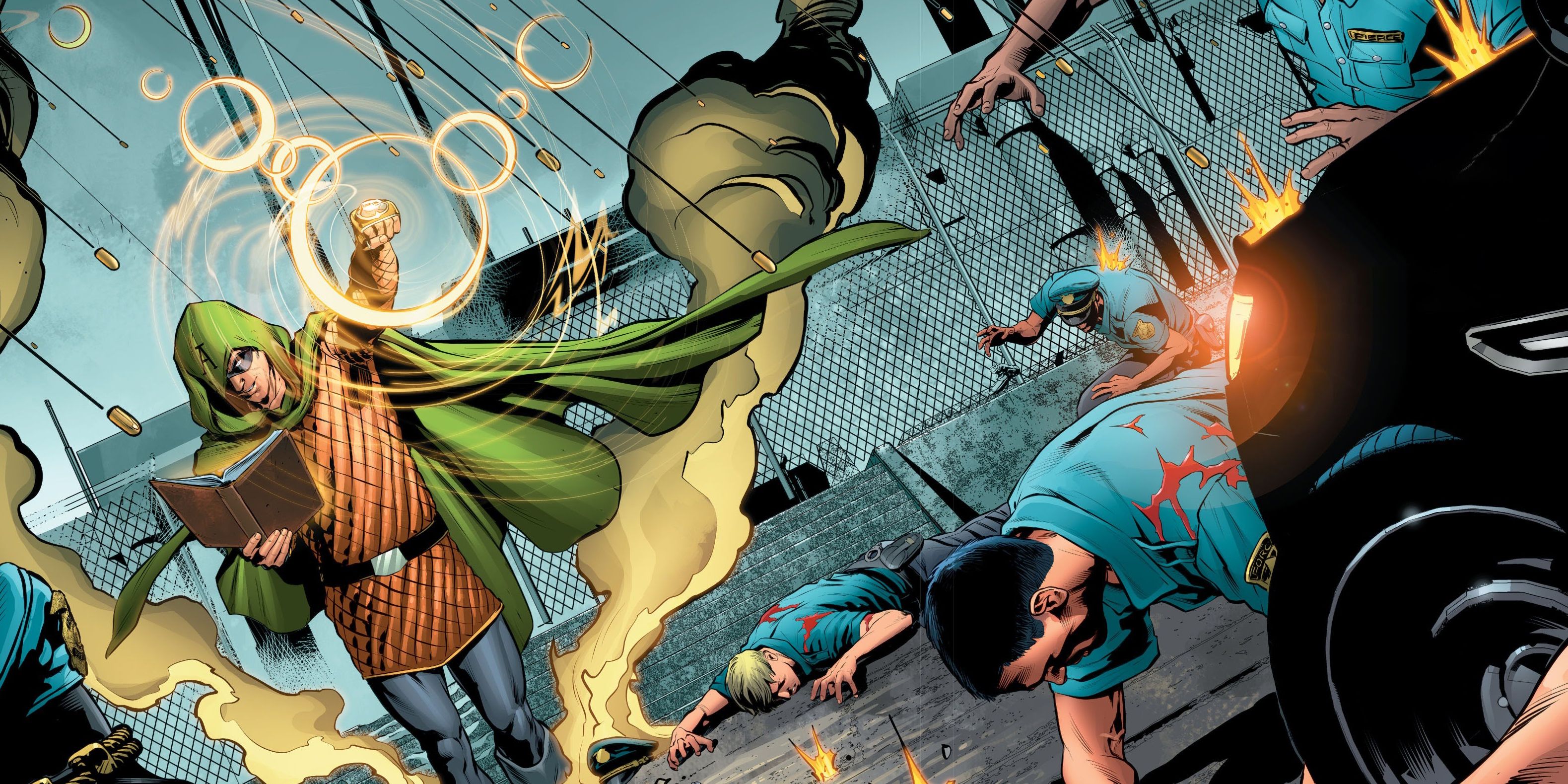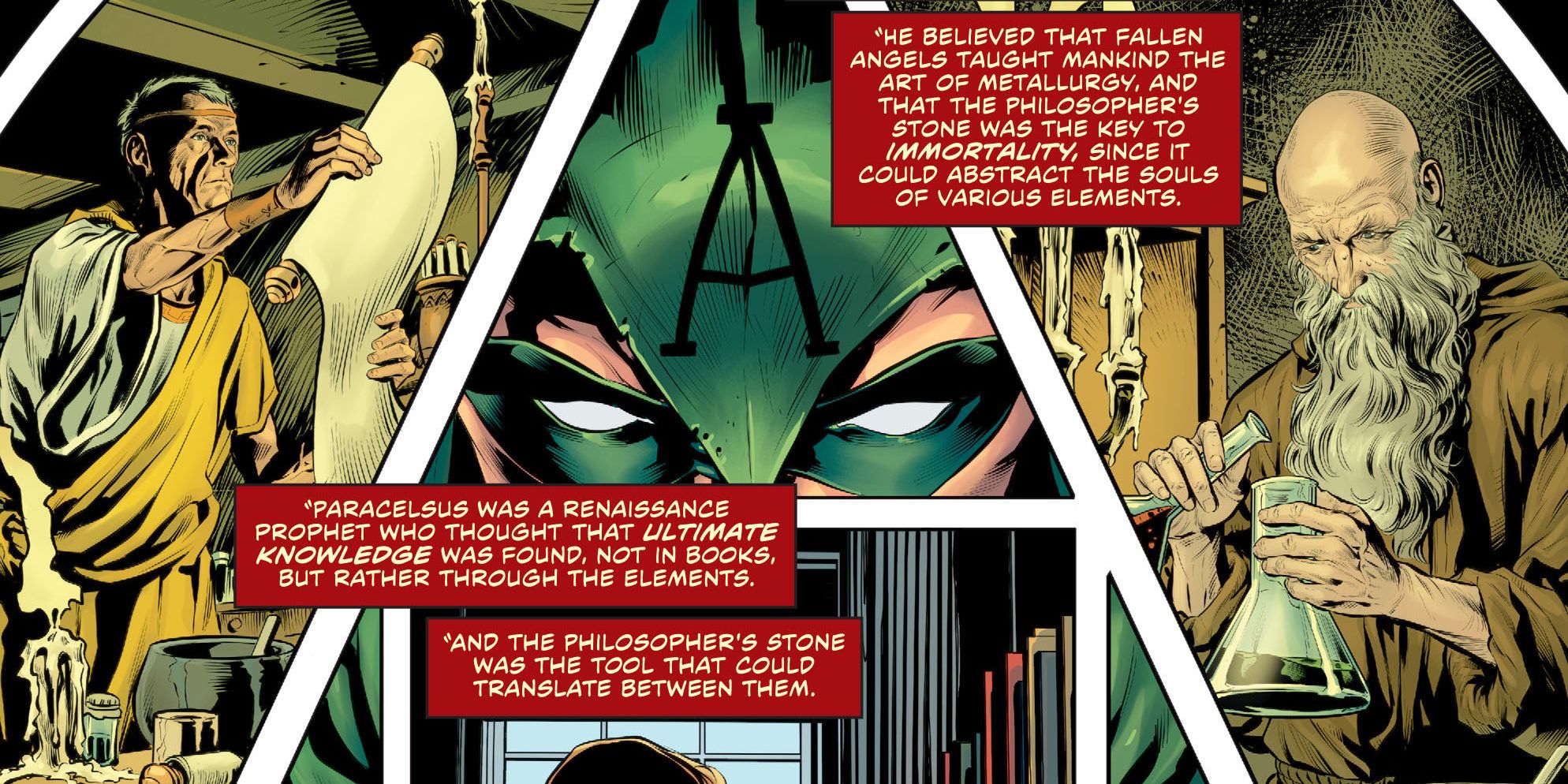WARNING: The following contains spoilers for The Flash #764 by Kevin Shinick, Will Conrad, Hi-Fi, and Steve Wands, on sale now.
In The Flash #764, Dr. Alchemy has broken out of Iron Heights Penitentiary and is after Barry Allen once again. This time, though, Barry notices that Dr. Alchemy is stronger and seems focused on a specific mission. It also becomes clear after their initial encounter that the good Doctor has made his vendetta against The Flash personal.
After turning the prison walls to molten lava and escaping, Dr. Alchemy turns raindrops into bullets. To save the innocent bystanders and the police officers at the scene, The Flash arrives at the prison and takes the Philosopher's Stone away from Dr. Alchemy. The Philosopher's Stone isn't just the source of Alchemy's powers but an ancient relic with a history. After Desmond escapes, Barry decides to research the Stone to better understand his opponent.
Dr. Alchemy debuted in 1958s Showcase #13, by John Broome, Carmine Infantino, and Frank Giacoia, as Mr. Element. He changed his name to "Dr. Alchemy" in Showcase #14, which was also the issue that introduced the Philosopher's Stone as Alchemy's source of power. In addition to immortality, an increased healing factor, and giving its wielder vast knowledge, the Philosopher's Stone has the power to transform the molecular structure of anything in the world, including the molecules of the human body, into any substance. When Barry confronts Dr. Alchemy at the prison, he notices that Desmond fashioned the Stone into a ring, thereby making it more difficult to take it away from him.
Barrydescied to research the Philosopher's Stone and discovers that it's been owned by a long history of alchemists and "crazed chemists" dating back to ancient times. One of the earliest owners was Zosimos, "One of ancient Greece's most noted Alchemists and mystics." Zosimos believed that fallen angels taught the arts of metallurgy to the women they married and that alchemy involves the studying of how bodies and spirits can embody one another and be drawn away from each other. As a result, "The Philosopher's Stone was the key to immortality since it could abstract the souls of various elements." Another notable possessor of the Stone was Paracelsus, an alchemist during the German Renaissance who believed absolute knowledge wasn't acquired through books, but through the elements. The Stone was "the tool that could translate between them", but it wasn't until Simon Magus had the Stone that it became weaponized. According to Barry's research, Magus saw the power the Stone had and used it to "cut a path of destruction through most of Medieval Europe and even into other dimensions."
The Philosopher's Stone continued to be passed down through the ages until Dr. Alchemy found it in his possession but as Barry notes, Desmond doesn't just want the Stone for its immortality, knowledge, or power. "He wants to absorb the power of the Stone so he doesn't need the relic itself." This would make Dr. Alchemy nearly unbeatable, giving him god-like powers that would be unstoppable. Through understanding the Stone's past, The Flash now knows what Desmond intends for its future.
Barry also discovers that even though it dates back to ancient times, the first recorded drawing of the Stone didn't appear until the 17th Century, which "also coincides with the emergence of the Illuminati." Barry doesn't think this is a coincidence and plans to research this connection further.
Having a deeper understanding of the Philosopher's Stone has given Barry a better understanding of what it can do and what Dr. Alchemy's plans are with it. During his research, Barry may have stumbled onto something more nefarious than just the Stone itself. The Flash may not have all the answers yet, but if anyone will get to the bottom of this mystery it's Barry Allen.



